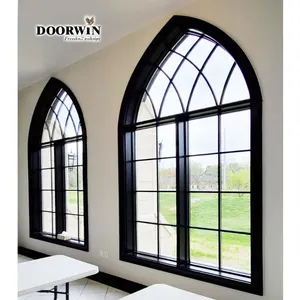
Simple Design Double Glazed Aluminium Fixed Arch Windows Glass Casement With Horizontal Opening Pattern For Villa Use


Wholesale High Quality Interior Window Shutters Exterior Plantation Shutters Breathable PVC Window Shutters Blind From China





















When it comes to architectural design, louvre windows play a vital role in infusing aesthetics and functionality. They are characterized by horizontal slats angled to admit light and air while keeping out rain, direct sunlight, and noise. The following sections delve into the types, features, and materials used in louvre windows.
Two primary types of louvre windows dominate the architectural world: exterior window louvers and interior window louvers. Exterior window louvers, often referred to as outside window louvers, are mounted on the outer side of the window frame. Their primary role is to shield the interior from external elements like sunlight, rain, and noise. On the other hand, interior window louvers, commonly known as plantation shutter louvers, are installed inside the window frame, mainly for light control and privacy. Another classification of louvre windows is based on their operation mechanism: manual and automatic. Manual louvre windows require physical adjustment of the slats, while automatic louvre windows, such as Breezway windows, utilize a motorized system for slat adjustment.
Louvre windows offer a unique set of features that make them a preferred choice for many architects and homeowners. One primary feature is their ability to provide natural ventilation. The adjustable slats allow control over the airflow, facilitating a comfortable indoor environment. This functionality is particularly evident in aluminum louver windows, which are renowned for their superior ventilation capabilities. Another significant feature is the enhanced privacy they offer. Unlike traditional windows, louvre windows allow light and air in without compromising on privacy, making them suitable for residential and commercial spaces alike.
Various materials are employed in the construction of louvre windows, each offering distinct characteristics. Aluminum is a commonly used material due to its durability, weather resistance, and low maintenance requirements. Metal louvers for windows, including those made from aluminum, are also popular for their modern, sleek aesthetic. Another material often used is wood, particularly in plantation louvres. Wooden louvre windows add a warm, natural touch to the interior and are favored for their sound insulation properties. However, they require regular maintenance to keep them in good condition.
Glass is also used in the construction of certain types of louvre windows, such as skylight louvres. These windows, installed in the ceiling, allow natural light to flood into the space, enhancing the ambient light levels while maintaining a consistent indoor temperature. In conclusion, louvre windows, with their diverse types, unique features, and varied materials, offer a versatile window solution.